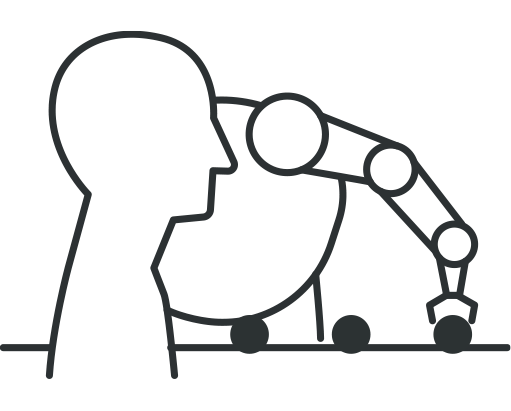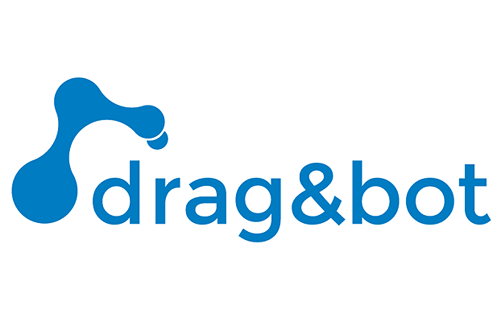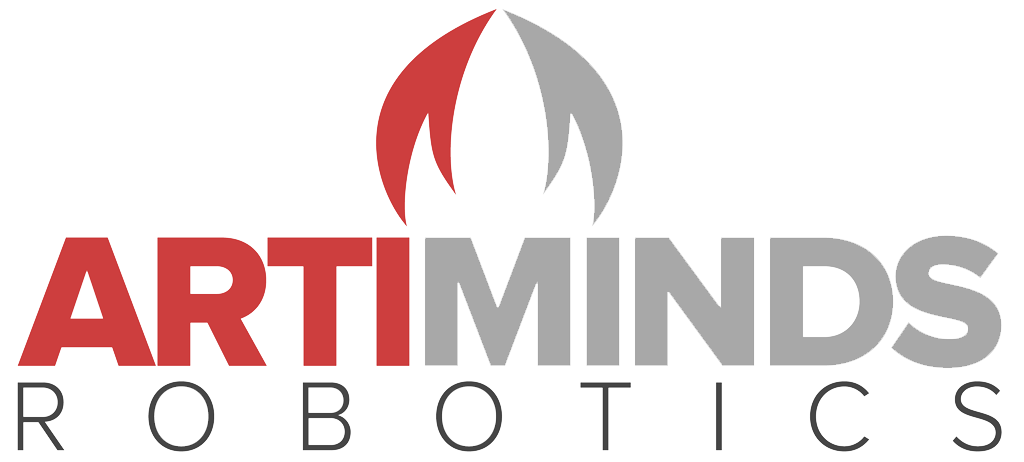+49 89 44 388 99 50
contact@smart-applications.com
Also use our contact form.
Cobots are robots designed for direct interaction with humans. The term is derived from the English words "collaboration" and "robot". In the initial exchange between humans and robots, protective devices often separated the two. This is no longer the case in the new generation and is referred to as human-robot collaboration (HRC).
Especially in manufacturing processes, cobots are supposed to open up new possibilities and carry out certain activities that are too difficult for human actors in the long run. In the meantime, they have long since found their way into the industrial working world and are proving to be profitable in many areas and are actively helping employees. In the everyday interaction between humans and machines, they are given a key role, both in enduring precision work and in hard, back-breaking jobs. They glue, solder, paint and weld. They are sometimes even able to learn and be "trained" by their "mentors". Sophisticated sensor technology enables the cobots to react to and interact with humans.
How closely humans and robots can work together without a protective device between them depends on the application. For the future, this also means that their areas of responsibility will be expanded to include customer-oriented service in retail and gastronomy, and that they will work on expanding their fields of application in general.
There are also test runs for this in Japan with the empathic robot "Pepper" and thus shows that this can also succeed in socially relevant fields in a sympathetic way.
Accordingly, safety functions for robot control are constantly being added and expanded. In collaborative scenarios, as described in the latter, forces, speed and procedural paths must be monitored in order to stop the robots if necessary. Various possibilities are used, for example, to completely avoid contact between humans and machines. For example, laser scanners, vision systems or methods such as ultrasound and radar are used. If contact between humans and robots cannot be avoided, force sensors are also used, which are built into the joints of the cobots. If the force and pressure values are exceeded, these can stop the robot from interacting.
However, it must be emphasised that, contrary to some fears, cobots are not an elite of artificial intelligence that can autonomously and completely take over the jobs of humans. They are assistants who prove to be supportive.
The automotive industry has been a pioneer in the use of cobots for several years. In series production, for example, they assist their human colleagues in such tasks as attaching door directions.

In summary, it should be emphasised once again that the cobots are by no means limited to welding seams or feeding heavy individual parts. Even where precision is required, the cobot can help to work better than a human and predominantly free of fluctuation bands. This can be reduced not only to mechanical areas, where the individual adaptability enables high-quality one-off pieces, but is also already being used in modern clinics in the field of surgery. Here, people work with robot-assisted surgical systems. If the robots used can be taught certain standard procedures and their parameters, they could in future be able to work on clearly defined areas independently and with high precision.
In essence, cobots take digitalisation and automation to the next logical level, paving the way for SMEs to automate their manufacturing to a cutting-edge level, reducing costs and improving their competitive position.
Our recommended smart apps

